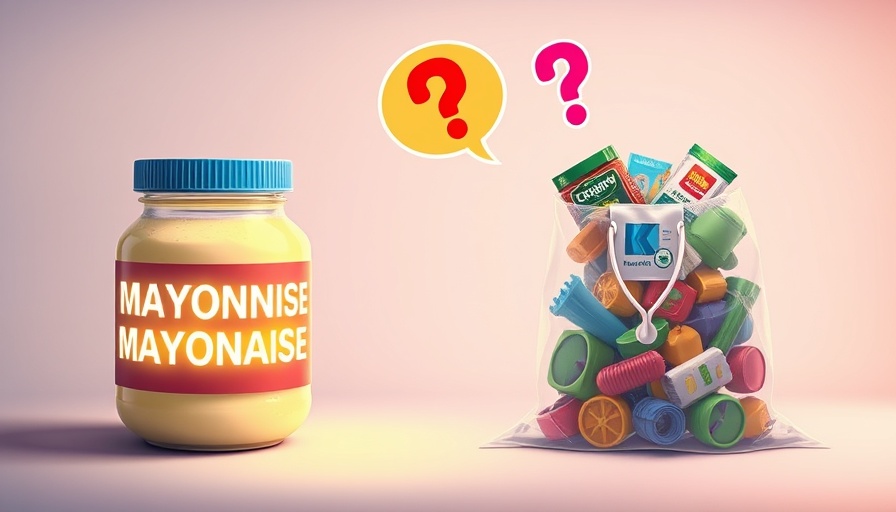
Understanding the Shelf Life of Mayo
As a staple in many households, mayonnaise is often at the heart of delightful recipes, from sandwiches to dressings. However, its role in our kitchen raises a crucial question: does mayo go bad? Understanding the shelf life of both store-bought and homemade mayonnaise can help parents maintain a healthy kitchen environment for their school-aged children.
The Longevity of Store-Bought Mayo
Store-bought mayonnaise is convenience packaged, but it still has a finite shelf life. An unopened jar can last up to a year when stored in a cool, dry pantry. However, once opened, it’s vital to refrigerate any leftover mayo and ideally consume it within 2-3 months. Leaving it at room temperature can shorten its lifespan significantly, reducing flavor quality and increasing the risk of spoilage.
Homemade Mayo: A Shorter Lifespan
When it comes to homemade mayonnaise, parents need to be especially cautious. Because homemade mayo lacks preservatives, it can only be safely consumed for 5-7 days after refrigeration. For those who enjoy the fresh taste of homemade mayo, freezing is an option, but it's essential to understand that the texture may be altered upon thawing.
Signs Your Mayo Has Gone Bad
It's important to recognize when mayonnaise has spoiled. Parents should look out for:
- Mold or discoloration: This is especially common around the lid, indicating the growth of contaminants.
- Off-putting smell: A sour or rancid odor is a clear sign that the mayo is no longer safe.
- Separation of ingredients: If the mayo appears excessively watery, it may have started to spoil.
- Unusual taste: A bitter or overly acidic flavor is a major red flag.
When in doubt, it's best to err on the side of caution and discard any questionable mayo.
How Does Mayo Spoil?
Understanding the process of spoilage can help parents maintain food safety. Mayonnaise spoils through oxidation and bacterial growth. When mayo is exposed to air, it undergoes chemical changes that can alter its flavor and safety. Bacterial growth can occur if utensils used to scoop mayo are not kept clean. This is particularly important in families with children, where hygiene is key.
Best Practices for Storing Mayo
Effective mayo storage can prolong its freshness. Here are some tips:
- Always keep the lid tightly sealed to minimize air exposure.
- Store mayo in the refrigerator as soon as it has been opened.
- Use clean utensils each time to prevent contamination.
These practices will help ensure that your family enjoys mayonnaise safely and deliciously.
The Importance of Food Safety
For parents, understanding food safety guidelines is crucial to maintaining the well-being of children. Resources like the USDA and FDA provide insightful information on proper food storage and expiration guidelines.
By keeping up-to-date with food safety, you can avoid potential health risks associated with spoiled condiments.
Making Healthy Choices in the Kitchen
Food knowledge extends beyond mayo. Incorporating fresh and unprocessed ingredients into your family's diet will enhance both health and flavor in the meals you serve. Pairing homemade mayo with salads and sandwiches not only boosts nutrition but also promotes family bonding during meal preparation.
Conclusion
Now that you're armed with knowledge about mayonnaise, it’s time to take action! Check your pantry and refrigerator to promote food safety in your kitchen. Ensuring proper storage and recognizing spoilage signs can help keep your family healthy and happy. By understanding how to keep mayo in top condition, you pave the way for nutritious and exciting meal options.
Encourage your children to assist with meal prep and teach them about food safety. This not only makes cooking a fun activity but also builds their confidence in the kitchen. Embracing healthy living starts with small steps!
 Add Row
Add Row  Add
Add 




 Add Row
Add Row  Add
Add 

Write A Comment